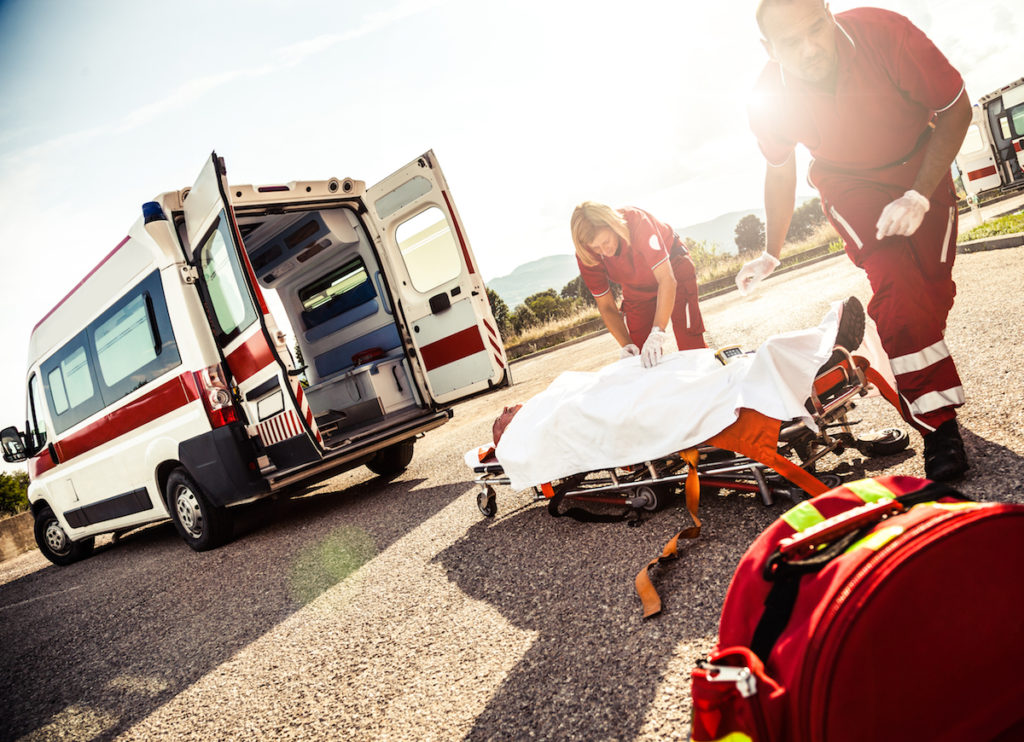States are losing the battle against life threatening opioid drugs, such as fentanyl and heroin. “The opioid problem is really bad,” says Daniel Kirk, a firefighter and paramedic who has worked in Massachusetts and Rhode Island for nearly four years. “An overdose doesn’t care who you are. I’ve treated overdose patients that are 17-years-old, and I’ve treated overdose patients who are 70-years-old.” According to the Centers for Disease Control and Prevention, approximately two-thirds of overdose deaths in 2015 were from opioids, and the death toll isn’t expected to drop anytime soon. Preliminary data released by the New York Times estimates that 59,000 to 65,000 people likely died from drug overdoses in 2016. The rising death count is the latest consequence of opioid addiction, now the leading cause of death in Americans under 50. To slow the rate of deadly overdoses, states have been increasingly relying on naloxone, a drug that reverses the effect of opioids on the brain and helps kick-start breathing in overdose patients. During an overdose, Kirk explains, “[a patient’s] respiratory rate can drop down to four times a minute. They’ll be snoring; they’ll be blue.” Naloxone, which Kirk says he has seen work in as little as ten seconds, helps to reverse both of these adverse effects. In other words, naloxone is a lifesaver. While the drug has been available to doctors and paramedics for decades, many states have passed laws making naloxone available to firefighters, policemen and loved ones of those likely to overdose. These laws are known as The Good Samaritan Law or Naloxone Access Law. A working paper by the National Bureau of Economic Research suggests that these laws could decrease opioid-related deaths by 9 to 11 percent, but this slight depression is still not enough to combat the rising number of opioid related overdose deaths in the United States. The statistics tell a daunting story, and first responders have a front row seat to America’s public health crisis. “I personally think that if you are in a public safety uniform, you should have naloxone on you, because it’s so bad,” Kirk argues. Opioids, he adds, are “everywhere. I was at the mall with my daughter, and a girl overdosed on a bench in the middle of the food court.” Since opioid addiction and opioid related deaths have reached crisis levels in the United States, it has started to garner the attention of politicians. In a recent report by President Trump’s opioid commission, they recommended the opioid epidemic be declared a national emergency. It cited data from the Centers for Disease Control estimating that 142 Americans die every day from opioid overdoses, a death toll equal to that of 9/11 every three weeks. The commission also asked that every law enforcement officer in the country be required to carry naloxone, stating strongly: “We urge you [President Trump] to mandate, with federal assistance, that naloxone be in the hands of every law enforcement officer in the United State.” As overdose deaths reach record highs, paramedics and government officials alike recognize the importance of getting naloxone into the hands of as many first responders as possible. In many rural areas that have been affected strongly by the opioid epidemic, paramedics are not always the first emergency personnel to respond to an overdose calls. It’s more likely that a police officer, firefighter or EMT will get to the scene first. First responders who are not paramedics do not all have access to naloxone. The longer an overdose patient has to wait for naloxone to be administered is more time the patient spends succumbing to the life threatening symptoms of opioid overdose including:
- Mood swings
- Confusion or delirium
- Pinpoint pupils
- Nausea or vomiting
- Sleepiness or inability to wake up
- Depressed breathing
Depressed breathing is the most deadly side effect of opioid overdose. The lack of oxygen to the brain will start to cause other organ systems, such as the heart, to shut down. If left untreated for too long, a person suffering an opioid overdose can die because they have stopped breathing. The more first responders that carry naloxone, the better the possibility of saving lives become. And that is what putting naloxone into the hands of all first responders comes down to – saving lives. Someone deep within their addiction can not always see a way out, but if they are still living and breathing there is a chance for recovery. As Trump’s opioid commission points out, “if we lose someone to overdose we obviously have no chance to treat them and return them to a productive life.” When someone is struggling with addiction, everyone around them feels it. It leaves parents, siblings, children, spouses and friends in a state of constant anxiety and depression. Their fear being that their loved one will die from their addiction. Making sure that every first responder has naloxone will not only saves the life of an overdose patient, it will save family and friends from the heartbreak of losing their loved ones. It is important to acknowledge that approximately 23 million Americans are currently living in recovery from their addiction today. It is not an easy task, recovery is a 24/7 job that never takes a day off and requires a large network of support, but it is not an impossible task. Every person struggling with addiction deserves an opportunity for recovery, and expanded access to naloxone among first responders can provide more overdose patients with that opportunity. “I’ve treated patients sometimes two to three times a month for overdosing on opioids, but that doesn’t mean I’ll stop trying to save them,” Kirk concludes. “I took and oath to help people and I think any life can be redeemed.”


